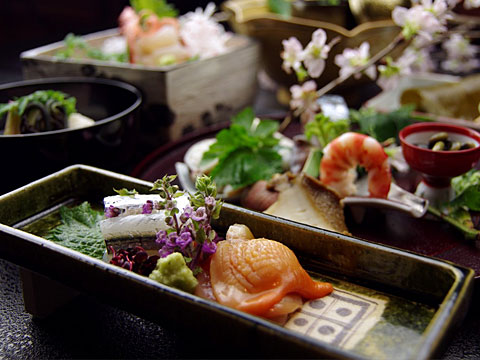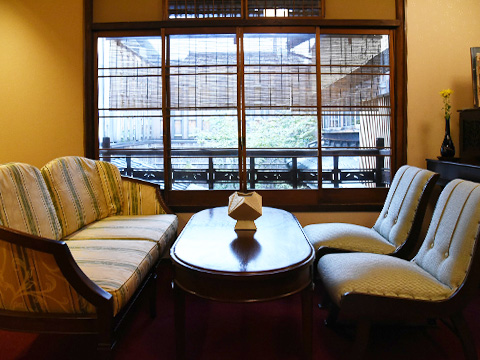The history of Gion and Kiku-Ume dates to the late Meiji period, more than 120 years ago.
At that time, the Hanami koji street name of this place was just a pathway developed from the bamboo bushes of Kenninji Temple.
During that time, the owner of Kiku-Ume had a refined aesthetic and Kiku-Ume designed it accordingly. The years have passed, but Kiku-Ume is still the same. It has four tea rooms and a Western-style room that retains a Taisho atmosphere. All of them are built with high-quality materials. This kind of teahouse style building is rare and valuable today.
Before the wwII, the great painters of Kyoto, such as Doomoto Inshou, used to meet here, and Kiku-Ume was one of the leading Kaiseki ryori restaurants in Kyoto.
After the wwII, Kiku-Ume mainly operated hotels, which were popular among writers and entertainers, and became a place for them to stay.
Kiku-Ume starting inthe Meiji and Taisho eras and accomopanying Gion through the Showa and Heisei eras even now in the Reiwa era. Kiku-Ume has always been committed to providing the most sincere service to visitors from Japan and around the world.
Yours sincerely, Master












